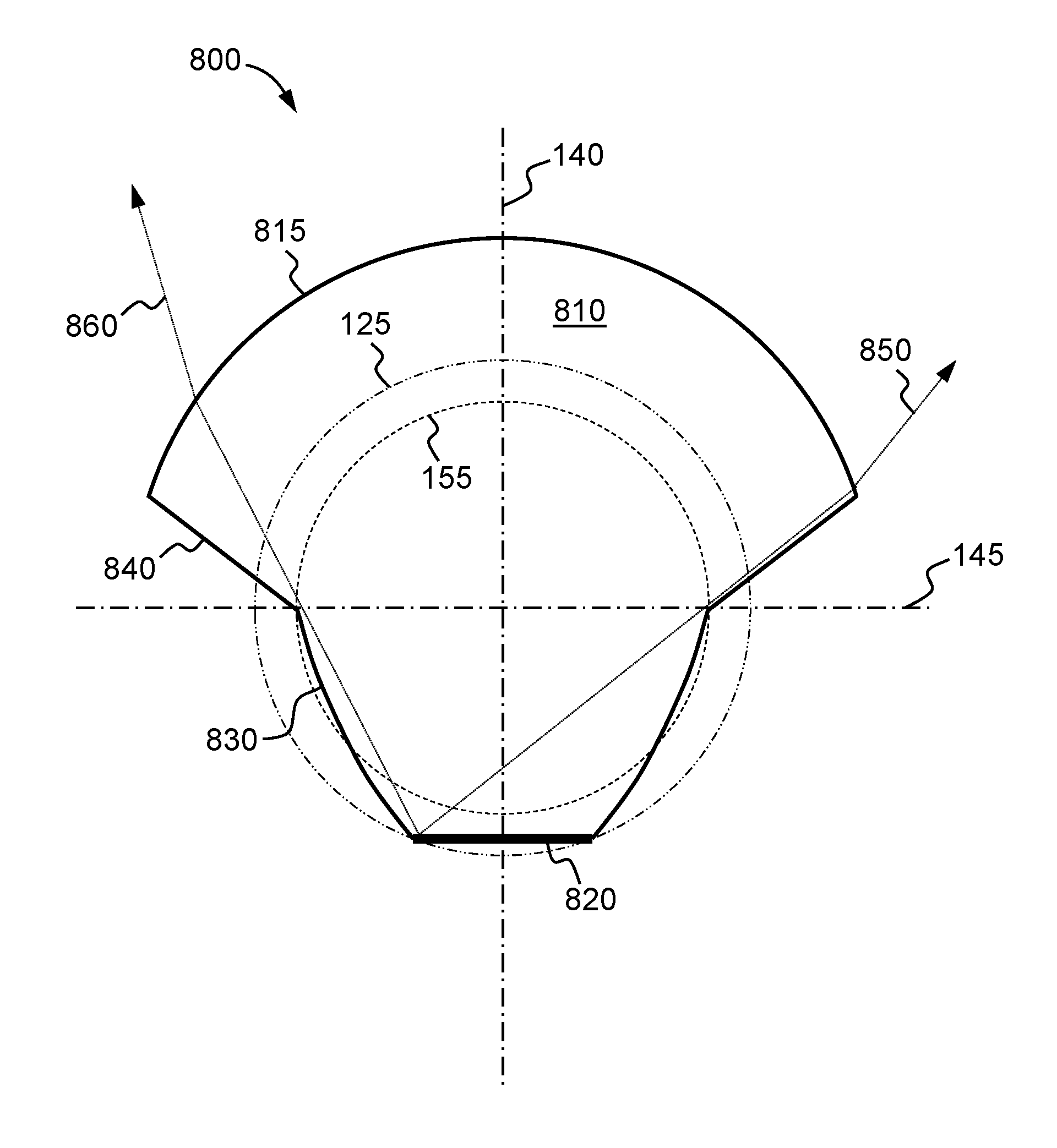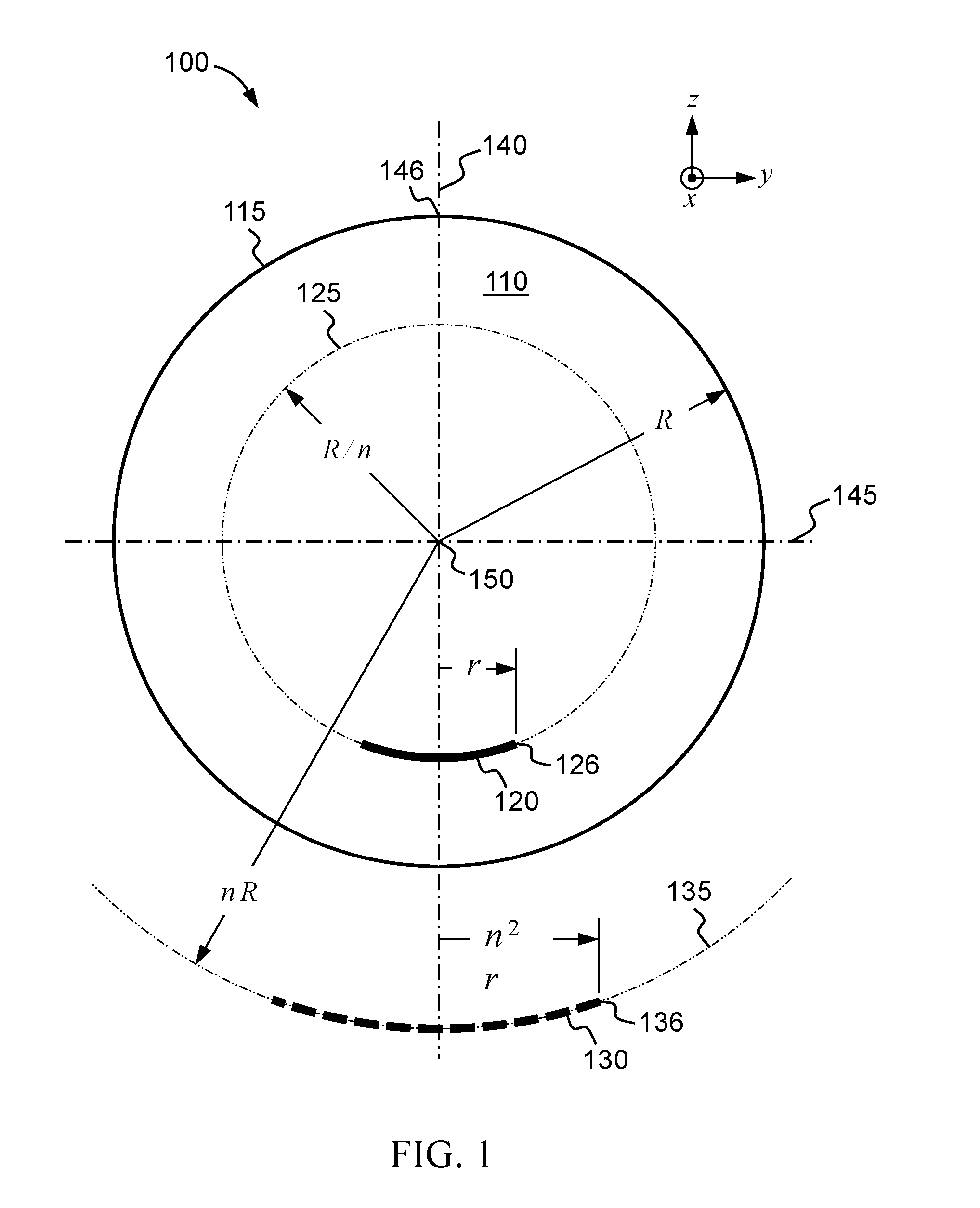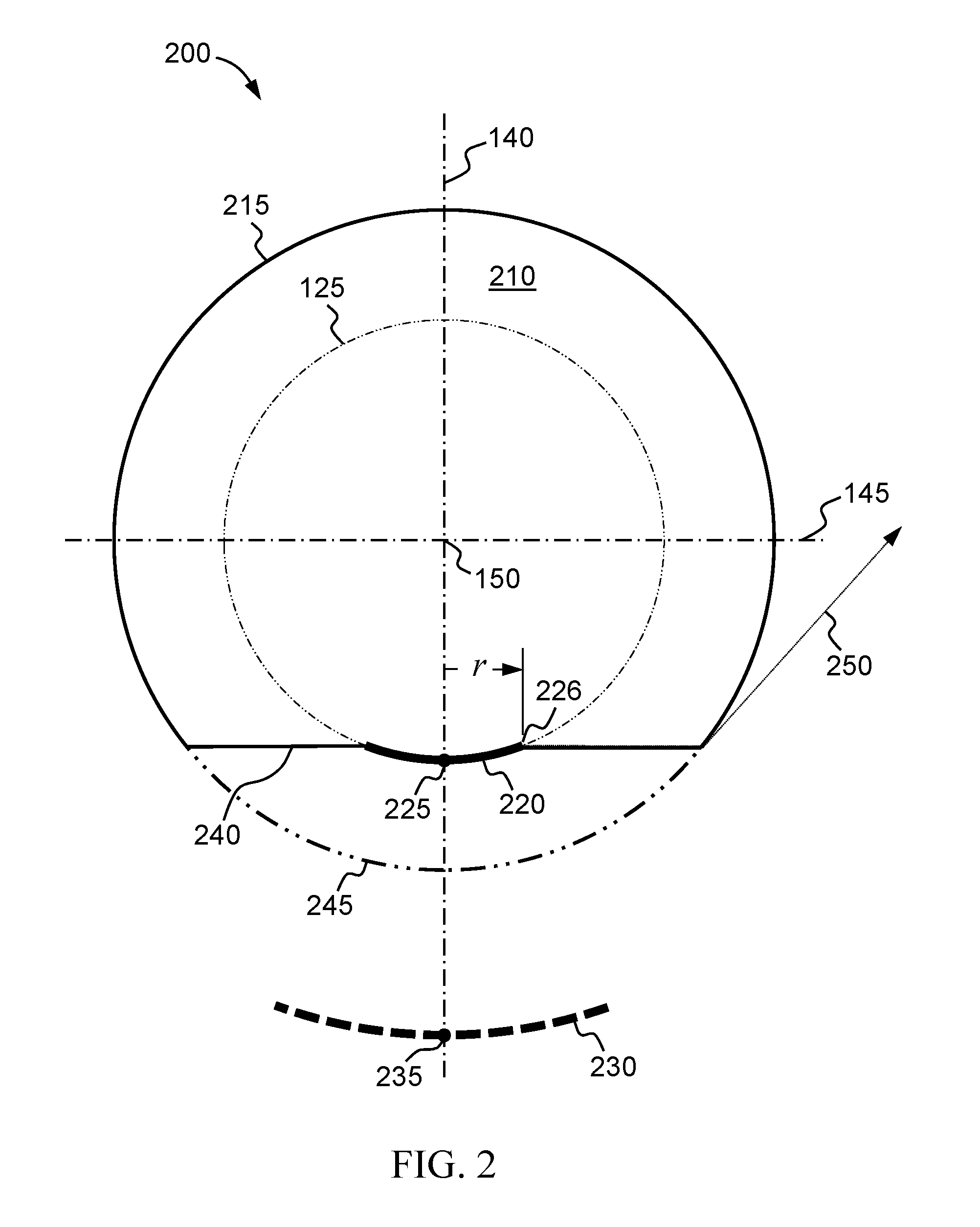Light-Emitting Device and Luminaire Incorporating Same
- Summary
- Abstract
- Description
- Claims
- Application Information
AI Technical Summary
Benefits of technology
Problems solved by technology
Method used
Image
Examples
Embodiment Construction
[0030]While the configuration and performance of various embodiments are discussed in detail below, it should be appreciated that the concepts described can be embodied in a wide variety of specific contexts. The specific embodiments discussed herein are thus merely illustrative of specific ways to make and use the invention and are not intended to delimit the scope of the invention.
[0031]Nonimaging optical design depends primarily on the edge ray principle (W. Welford and R. Winston, The Optics of Nonimaging Concentrators, New York: Academic Press, 1978) to design optical systems having high optical efficiency. According to the edge ray principle, an ideal system (having maximum theoretical concentration and efficiency) transmitting radiation from an entry aperture to an exit aperture has the property that extreme rays of the entry aperture pass the exit aperture likewise as extreme rays. All other rays originating within the entry aperture traverse the system to lie at angles and / ...
PUM
| Property | Measurement | Unit |
|---|---|---|
| Fraction | aaaaa | aaaaa |
| Angle | aaaaa | aaaaa |
| Radius | aaaaa | aaaaa |
Abstract
Description
Claims
Application Information
 Login to View More
Login to View More - R&D
- Intellectual Property
- Life Sciences
- Materials
- Tech Scout
- Unparalleled Data Quality
- Higher Quality Content
- 60% Fewer Hallucinations
Browse by: Latest US Patents, China's latest patents, Technical Efficacy Thesaurus, Application Domain, Technology Topic, Popular Technical Reports.
© 2025 PatSnap. All rights reserved.Legal|Privacy policy|Modern Slavery Act Transparency Statement|Sitemap|About US| Contact US: help@patsnap.com



